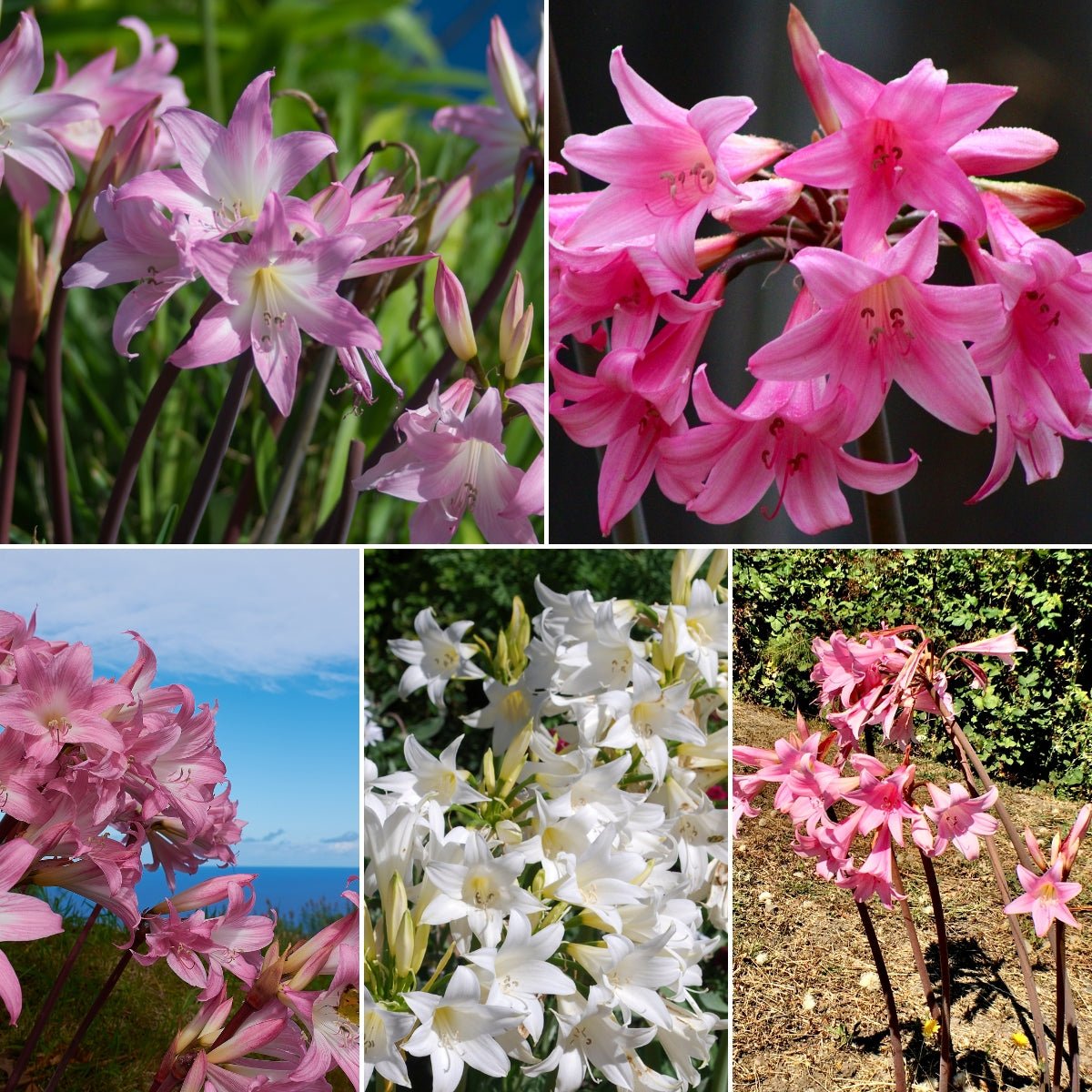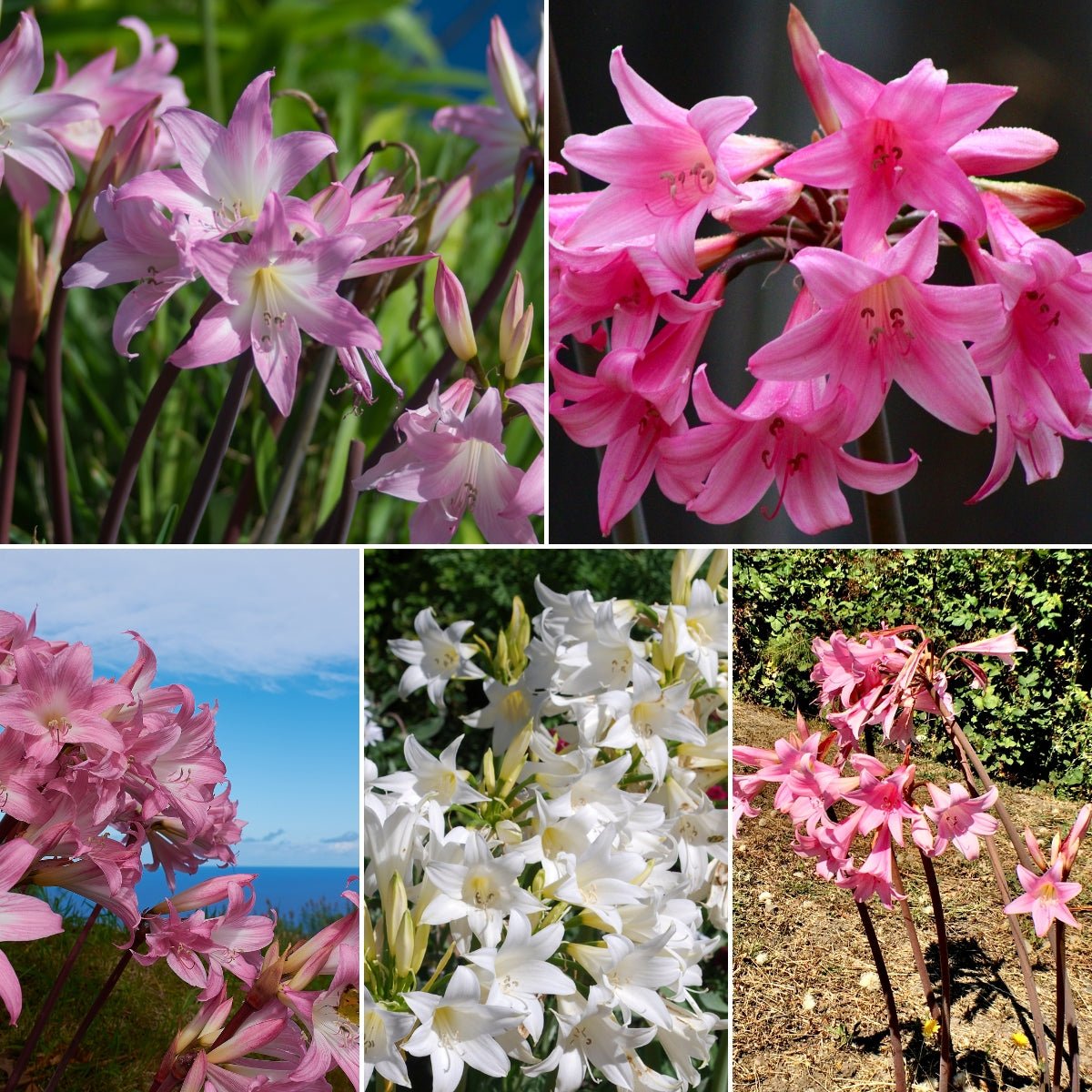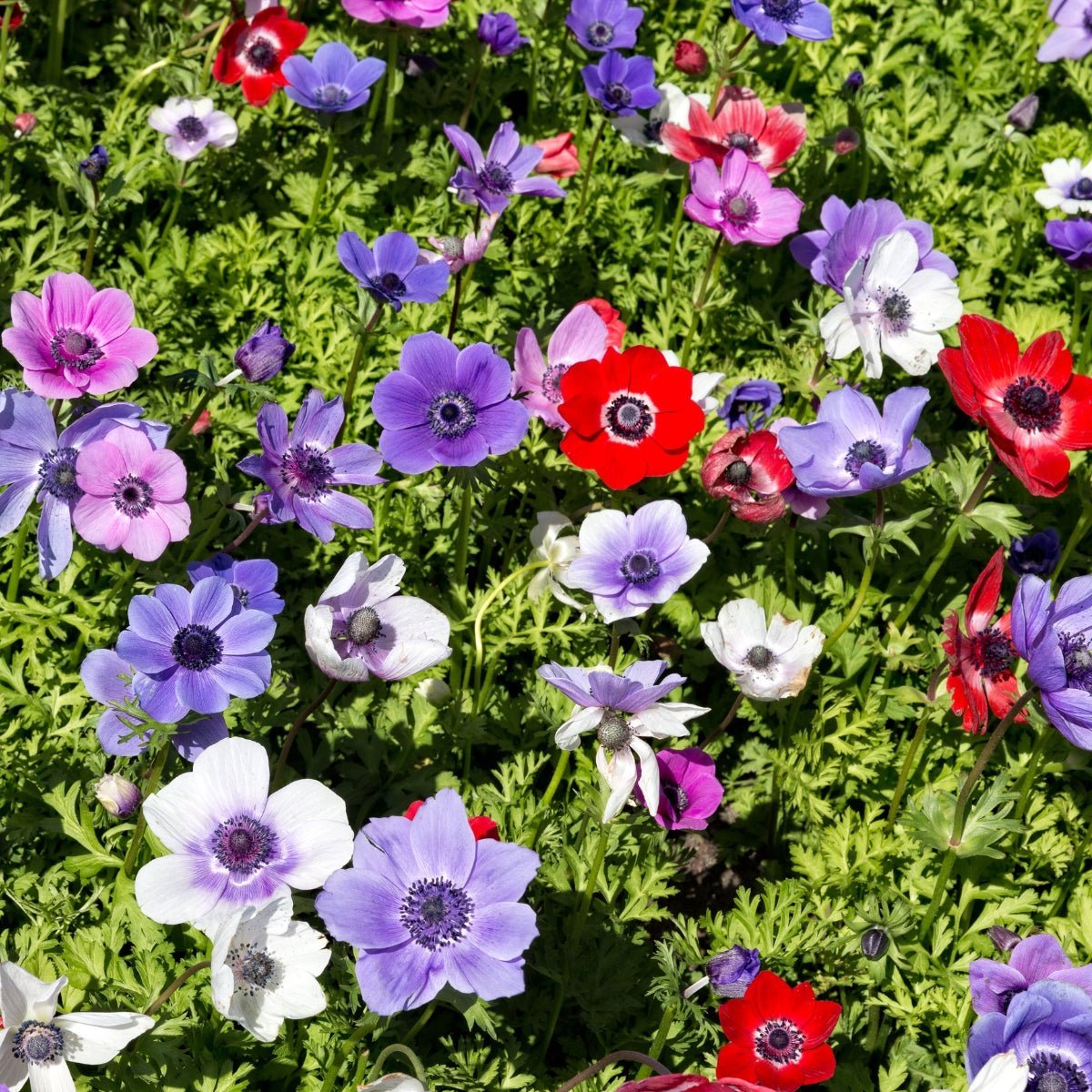Belladonna Lilies, also known as Naked Lady Lilies, are a garden favourite thanks to their bare stems topped with glorious pink, white, or blush blooms in late summer to early autumn. These striking flowers rise suddenly from the ground just as other plants start to wind down — earning their cheeky name.
🌿 Climate Suitability (Australian Zones 1–4)
Belladonna Lilies grow well in a range of Australian climates, from cool temperate to subtropical regions. They are drought-tolerant and frost-tolerant bulbs, tolerating light frosts (around -5 °C) once established. However, they perform best where there is a dry summer dormancy and moderate winter rain. Here's a breakdown of Zones 1–4:
-
Zone 1 (Cool/Alpine): Includes Tasmania, ACT, highlands of NSW/VIC. Suitable with a sunny, sheltered spot. Mulch lightly in winter.
-
Zone 2 (Temperate): Includes VIC, SA, southern WA, parts of NSW. Ideal zone with perfect seasonal conditions.
-
Zone 3 (Subtropical): Includes QLD coast and northern NSW. Can grow well if kept dry in summer.
-
Zone 4 (Tropical): Far north QLD, NT, tropical WA. Not ideal due to wet summers and lack of dry rest.
Wherever you grow them, remember Belladonna Lilies need a distinct dry dormancy period to trigger blooming. In wet summer areas, grow in containers or under cover.
☀️ Sunlight and Soil Needs
-
Sunlight: Full sun (6–8 hours minimum) is best. A touch of afternoon shade is fine in hot inland regions.
-
Soil: Well-drained is key. Sandy or loamy soil is best. Improve heavy soils with coarse sand and compost. Neutral to slightly acidic pH is preferred.
🌱 Planting Instructions
-
When: Late summer to autumn (February to May).
-
Depth: Plant with the neck just above soil level.
-
Spacing: 20–30 cm apart.
Once planted, avoid disturbing the bulbs. They often take a year or two to settle before blooming.
💧 Watering
-
Growing season (autumn to spring): Water moderately; let rainfall do most of the work.
-
Dormancy (late spring and summer): Keep dry. Do not water. Dry rest is essential for flowering.
❄️ Flowering Cycle
-
Late summer to early autumn: Flower spikes emerge on bare stems.
-
Autumn to spring: Leaves appear after flowering and remain through winter.
-
Spring to early summer: Leaves die back. Bulb enters dormancy.
This cycle is opposite to most bulbs, making them valuable for off-season colour.
🌾 Fertilising & Long-Term Care
-
Fertilise after flowering, as leaves emerge. Use a balanced bulb fertiliser.
-
Do not overfeed or use high-nitrogen fertilisers.
-
Belladonnas prefer to be left undisturbed for many years.
-
Avoid mulching in summer. Bulbs like their tops to bake in the sun.
❌ Pests and Diseases
-
Snails & slugs: May nibble on leaves. Control with snail bait or manual removal.
-
Lily caterpillar: Check for leaf damage and black droppings. Remove or use a natural caterpillar spray.
-
Fungal issues: Rare. Avoid overhead watering and ensure good airflow.
Belladonna Lilies are generally pest-resistant and low-maintenance.
🏠 Growing in Pots
-
Use large, deep containers with excellent drainage.
-
Choose a free-draining bulb or succulent mix.
-
Keep dry in summer. Resume watering with leaf growth.
-
Re-pot or divide every 3–5 years.
🪴 Propagation
-
Division: Lift and divide dormant clumps in late spring to summer. Replant offsets immediately.
-
Seed: Can be grown from seed, but may take 4–7 years to flower.
⏰ Seasonal Maintenance Checklist
-
Summer: Keep dry. Watch for flower spikes.
-
Autumn: Flowers appear. Leaves grow. Begin watering and feeding.
-
Winter: Let leaves grow. Keep weed-free.
-
Spring: Leaves die back. Stop watering. Divide if needed.





